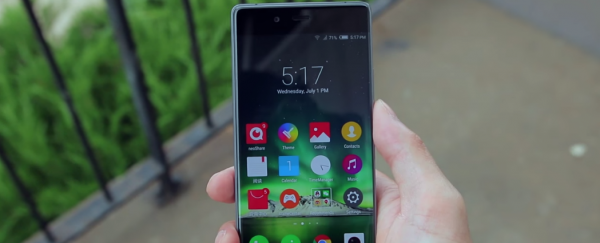Smartphone technology becomes more advanced and more awesome with every passing year, but there's one problem that always seems to dog the latest and greatest handsets: battery life. As we reach the limits of lithium-ion technology and phones continue to offer bigger and brighter screens (not to mention more powerful processors), finding a phone that lasts beyond a day is as much of a challenge as it ever was.
With scientists still struggling to eke out more juice from today's smartphone battery packs, the best short-term solution could be to reduce the power draw of the other internal components. That's the thinking behind the SmarTune Antenna from tech start-up Cavendish Kinetics - the device's party trick is being able to reduce the time a phone's components spend searching for a signal and making a connection, and its makers say that could lead to an energy saving of up to 45 percent.
It's all down to the 3db antenna gain that the Cavendish Kinetics engineers have managed to put inside the SmarTune Antenna. That translates to a stronger signal and a faster lock, which means your phone spends less time hunting around and trying to grab on to weak connections (if you're ever in an area with patchy mobile reception, just watch how quickly your battery life drains away).
The good news is that after eight years of work, the antenna is small, reliable, and cheap enough to be produced on a mass scale. And according to Andy Boxall at Digital Trends, it's also been tested over 100 billion cycles, "which is the equivalent of it being used once a second for the next 100 years," he says. The bad news is that phone manufacturers are using the technology to create smaller antennas (and thinner phones) rather than boosting battery life. China's ZTE has added SmarTune to some of its handsets, but considers the look and feel of a phone to be more important to consumers than how long it lasts.
The company is hopeful that the SmarTune antenna can find a wider audience and eventually boost battery life for the masses. "We launched commercially last September, and manufacturers needed convincing that the new component technology is reliable," Lars Johnsson, vice president of product marketing for Cavendish Kinetics, told Digital Trends. "This has been removed as a concern. The first customer launch has really brought us attention, and we're talking to pretty much every smartphone maker now."
"The technology is there for faster data speeds and better battery life," added Johnsson, "if manufacturers choose to use it in that way."
And therein lies the rub - if manufacturers think we'd all rather have thinner and faster phones rather than ones that last for days and days without a recharge, it could be a while before battery life becomes a top priority in the engineering process. We'll just have to live in hope.
